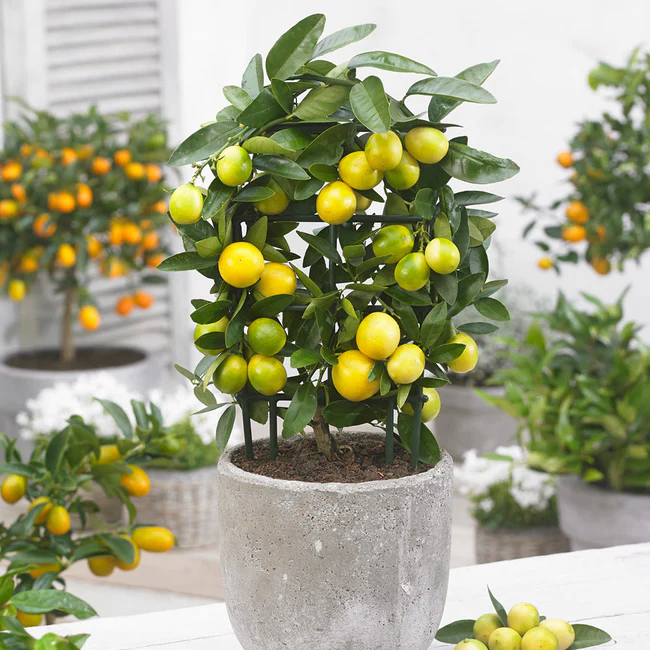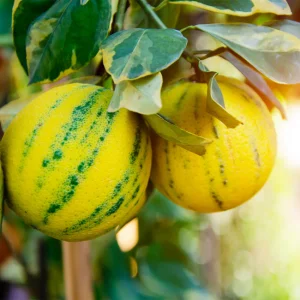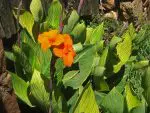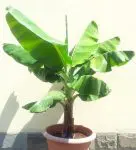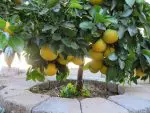This post contains affiliate links. If you buy something from one of our links we may earn a commission. Thanks
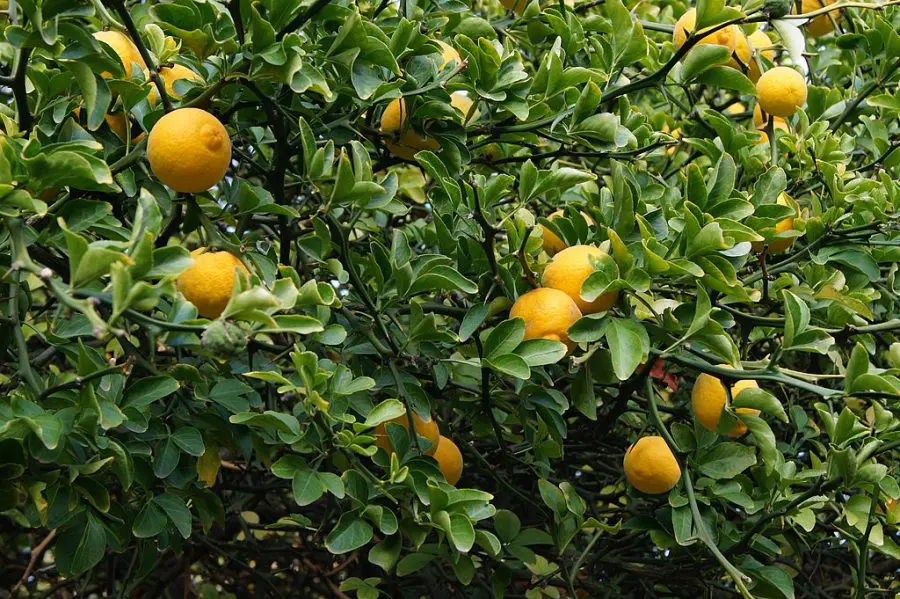
Would you like to grow citrus trees outdoors even in a cold climate? I have good news. Flying Dragon is hardy to USDA zone 6 or -10°. We will share Trifoliate Orange Care and help you train your flying dragon.
Trifoliate Orange care involves planting in well-draining soil with full sun exposure. Watering should be regular but moderate, allowing the soil to dry out between sessions. Fertilize with a balanced fertilizer in the growing season. Prune to maintain shape and remove dead or diseased branches.
What Is Trifoliate Orange?
Trifoliate Orange, also known as Citrus trifoliata or Poncirus trifoliata, is a deciduous shrub or small tree native to China.
It is also known by common names like Japanese Bitter Orange and Chinese Bitter Orange, and it is also called Flying Dragon and used as a rootstock for dwarfing citrus trees, and as an ornamental plant.
This hardy plant is not only prized for its beautiful and fragrant white flowers but also for its versatility in the garden.
Trifoliate Orange has a number of uses, including use as impenetrable hedges thanks to its large thorns.
This plant is highly adaptable, making it an ideal choice for gardeners and landscapers alike.
Trifoliate Orange Care
In this blog post, we will take a closer look at Trifoliate Orange, discussing its characteristics, growing conditions, care, and uses, to help you make the most of this fantastic plant in your garden.
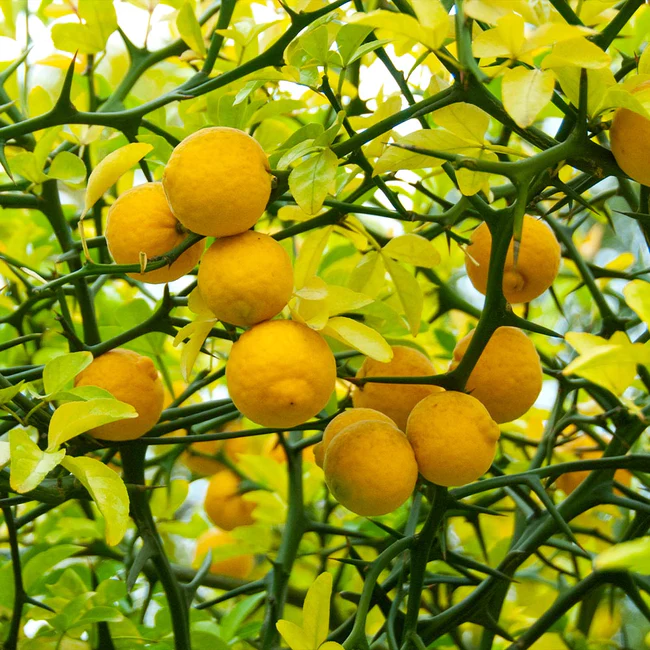
A Brief Overview Of Trifoliate Orange (Citrus trifoliata or Poncirus trifoliata)
The Trifoliate Orange tree is a deciduous shrub or small tree that can grow up to 10-20 feet tall. It is known for its attractive, dark green leaves which are trifoliate (having three-lobed leaves), and its fragrant white flowers that bloom in spring.
The plant produces small, inedible, greenish-yellow fruit that resembles oranges but is more bitter and tart.
The bitter fruits are about the size of a golf ball and are usually not eaten out of hand and have little pulp but can be used for marmalade.
Trifoliate Orange is a native of China and has been widely cultivated for centuries for its ornamental value and its use in Chinese medicine. The medicinal uses can be documented below.
Poncirus trifoliate is a traditional Chinese medicinal plant used for treating inflammation-related diseases for a long time and trifoliate orange contains abundant auraptene,a potential anti-inflammatory agent https://pubmed.ncbi.nlm.nih.gov/
Trifoliate Orange Plants As A Hedge Dwarfing Rootstock For Citrus Trees
Trifoliate hardy orange plants are a highly valued plant in the world of gardening and horticulture.
It is often used as a thorny hedge plant to provide privacy and wind protection, or as a property divider.
Trifoliate Orange is a tough and durable plant that can tolerate a range of environmental conditions and can thrive in areas where other plants may struggle.
It also can be grown outdoors in most of North America.
Flying Dragon Dwarfing Rootstock For Citrus
Trifoliate Orange is also used as a rootstock for citrus trees, which helps to control their size and promotes healthy growth.
By using Trifoliate Orange or Flying Dragon as a rootstock, citrus trees can be grafted onto the plant’s root system, which results in a smaller and more manageable tree.
This is particularly useful for gardeners with limited space who still want to grow citrus trees. The rootstock also helps to protect the tree from pests and diseases, making it a highly effective tool in the cultivation of citrus.
Origin And History Of Trifoliate Orange
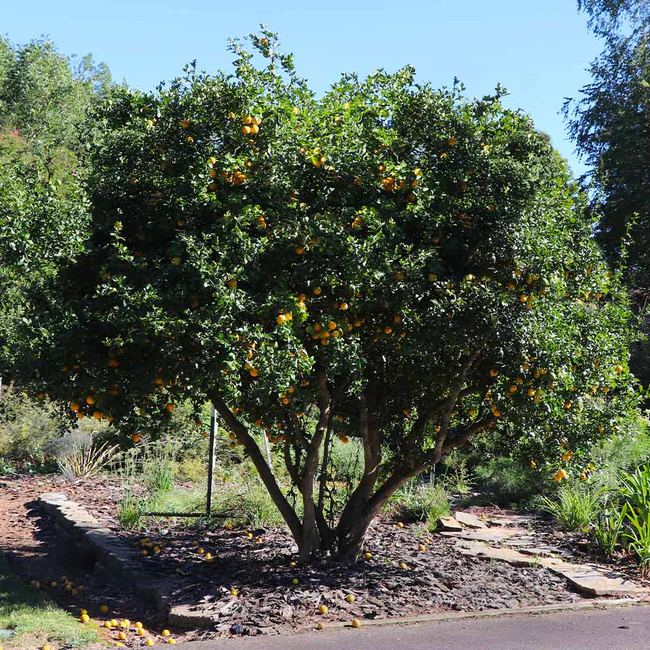
Trifoliate Orange is native to China and has been widely cultivated in Asia for centuries.
It was introduced to Northern Europe in the 18th century, and later to the United States in the 1850s by William Saunders who was a botanist and U.S.D.A’s first botanist and landscape designer where it quickly gained popularity as an ornamental plant.
The plant’s versatility and hardiness made it an ideal choice for use as a hedge, a rootstock for dwarfing citrus trees, and as an ornamental plant.
In recent years, Trifoliate Orange has gained popularity as a choice for edible landscaping, due to its tolerance for a wide range of environmental conditions and its ability to provide food and habitat for wildlife.
The plant is also grown for its essential oil, which is used in the production of perfumes and cosmetics.
Overall, Trifoliate Orange is a highly valued and versatile plant that has played a significant role in the history of horticulture and gardening.
There is a dispute about whether it should be classed as a citrus species or whether it is in a separate species Poncirus trifoliata because it is deciduous and has trifoliate leaves.
Growing Trifoliate Orange
Climate requirements
Trifoliate Orange is hardy and can tolerate a wide range of environmental conditions.
It is ideal for growing in USDA hardiness zones 5-9, where it can withstand temperatures down to -10 to -20°F.
The plant prefers full direct sunlight but tolerates some partial shade, and is highly adaptable to various soil types, as long as they are well-drained.
Trifoliate Orange can also tolerate drought conditions, making it an ideal choice for gardeners in dry climates.
Soil conditions
Trifoliate Orange is highly adaptable and can grow in a range of soil types, as long as they are well-drained.
The plant prefers fertile, neutral to slightly acidic soil with a pH range of 6.0-7.0. However, it can tolerate a range of soils, including low-lime soil, that are rocky, clay, or sandy.
Trifoliate Orange generally requires well-draining soil rich in organic matter and medium moisture to promote healthy growth and development.
Propagation Methods
Trifoliate Orange can be propagated by seed, cuttings, or grafting. Seed propagation is the easiest method, but it can take several years for the seedlings to reach maturity.
Cuttings can be taken in the spring or summer and rooted in a rooting hormone to promote quicker growth.
Grafting is the preferred method for propagating Trifoliate Orange for use as a rootstock for citrus trees.
In this method, a cutting from the desired tree is grafted onto the rootstock of a Trifoliate Orange plant.
Fertilization And Watering
Trifoliate Orange requires regular fertilization to promote healthy growth and development.
The plant benefits from a balanced, slow-release fertilizer applied in the spring, and a second application in the summer.
The plant can tolerate drought conditions, but regular watering is recommended to maintain optimal growth.
During periods of drought, it is important to ensure that the soil remains moist but not waterlogged.
Why It Makes An Ideal Container Plant Indoors
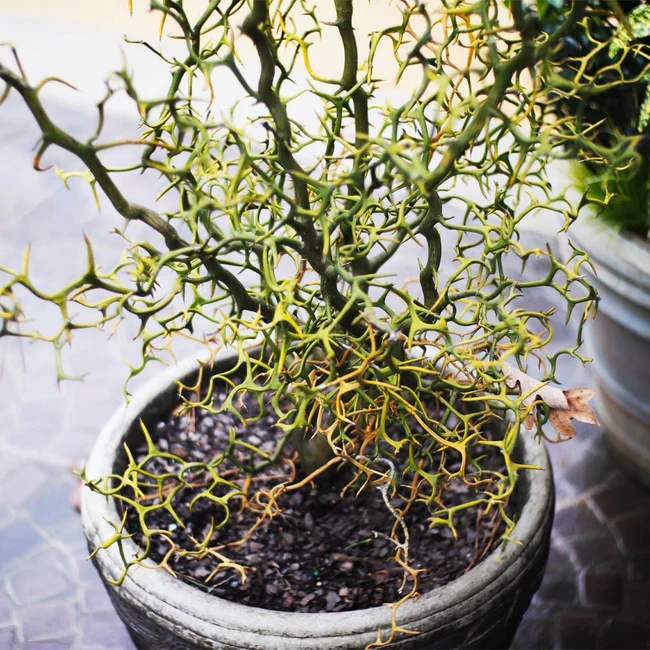
Trifoliate Orange is an ideal container plant for indoor use because of its adaptability and hardiness.
This hardy orange tree and be left outdoors in winter or grown indoors. The plant is well-suited to growing in pots, as it can be pruned to control its size and shape.
It is also easy to care for, requiring only regular watering and occasional fertilization to maintain healthy growth.
It should be placed in full sun indoors and if that is not possible place it under an LED grow light.
Additionally, Trifoliate Orange can be grown indoors in areas where outdoor growing conditions are not favorable, making it a versatile and attractive choice for indoor gardening.
Furthermore, the plant’s fragrant flowers and attractive leaves provide an attractive addition to indoor décor, making it a popular choice for adding a touch of greenery to indoor spaces.
Training Trifoliate Orange as a Hedge
How To Train Your Flying Dragon Tree
Trifoliate Orange is a popular choice for use as a hedge due to its many benefits.
Some of the benefits of using Trifoliate Orange as a hedge include:
• Drought tolerance: Trifoliate Orange is relatively drought-tolerant, making it a great choice for low-maintenance landscaping.
• Thorns: Trifoliate Orange is well known for its sharp thorns, which make it an effective barrier for keeping animals and people out of specific areas.
• Versatility: Trifoliate Orange can be pruned into a variety of shapes, making it a versatile choice for different types of landscaping projects.
• Cold hardiness: Trifoliate Orange is hardy to temperatures as low as -10°F, making it a great choice for cold climates.
• Disease and pest resistance: Trifoliate Orange is relatively resistant to common pests and diseases, which helps to reduce the need for frequent treatments and maintenance.
Pruning Techniques for Maintaining Shape and Size
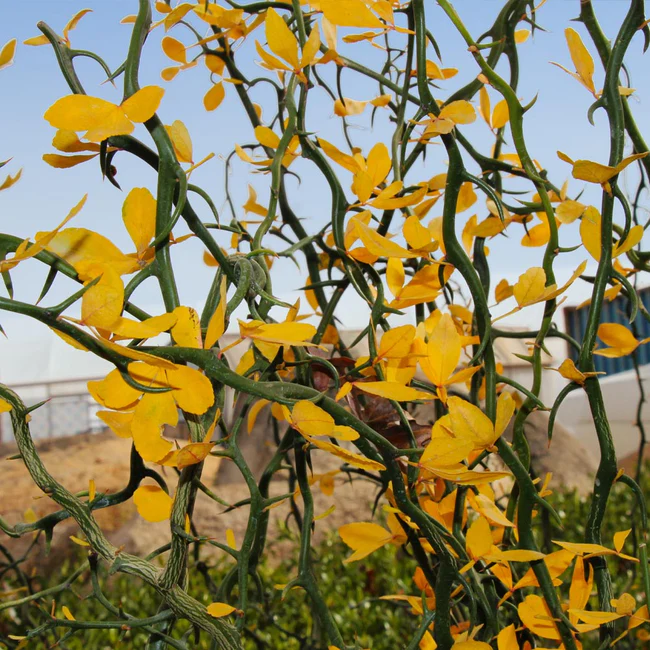
Pruning is an important aspect of training your Flying Dragon as a hedge. Be careful of the thorny branches when pruning because they can have vicious thorns.
Here are some tips for pruning Trifoliate Orange to maintain its shape and size:
• Timing: The best time to prune Trifoliate Orange is in late winter or early spring before new growth begins.
• Shape: Prune Trifoliate Orange to maintain the desired shape, whether it be rounded, square, or something in between.
• Height: Trim the top of the hedge to maintain the desired height, but be careful not to cut too much at once, as this can lead to dieback or uneven growth.
• Thinning: Thin out the interior of the hedge to allow for light and air to reach the center of the plant. This will help to keep the hedge dense and full.
Due to its hardiness and adaptability in some areas, it is considered an invasive species.
Controlling Pests and Diseases
While Trifoliate Orange is relatively resistant to pests and diseases, it is still important to keep an eye out for potential problems and take steps to control them as needed.
Here are some tips for controlling pests and diseases in Trifoliate Orange:
• Inspection: Regularly inspect the plant for signs of pests or diseases, such as holes in the leaves, yellowing, or abnormal growth patterns.
• Sanitation: Keep the area around the plant clean and free of debris, which can harbor pests and diseases.
• Natural controls: Encourage natural predators, such as ladybugs and lacewings, which will help to keep pests under control.
• Chemical controls: If necessary, use chemical controls, such as insecticidal soap or neem oil, or horticultural oil, to control pests.
Be sure to follow the label instructions carefully to avoid harming beneficial insects or causing damage to the plant.
By following these tips for pruning and controlling pests and diseases, you can keep your Trifoliate Orange hedge healthy and looking great for years to come.
Using Trifoliate Orange as a Dwarfing Rootstock for Citrus Trees
Advantages of using Trifoliate Orange as a rootstock
Trifoliate Orange has several advantages when used as a rootstock for citrus trees. One of the main advantages is its ability to reduce the size of the tree, making it easier to manage and harvest.
This is particularly useful for gardeners with limited space who still want to grow their own citrus trees.
Trifoliate Orange is also highly resistant to pests and diseases, making it an ideal choice for growing in areas where these problems are prevalent.
Additionally, the plant is drought-tolerant and can withstand a wide range of environmental conditions, making it an ideal choice for gardeners in dry climates.
Comparison with other rootstocks
There are several other rootstocks that can be used for citrus trees, including sour orange and lemon.
However, Trifoliate Orange has several advantages over these rootstocks.
For example, it is less susceptible to pest and disease problems and is more adaptable to a wider range of soil and climate conditions.
Additionally, Trifoliate Orange is more cold-tolerant than other rootstocks, making it an ideal choice for gardeners in colder climates.
Grafting techniques for citrus trees
Grafting is the process of attaching a cutting from a desirable citrus tree to the rootstock of a Trifoliate Orange plant.
This process creates a strong and healthy tree that can produce high-quality fruit.
The grafting process should be started in the winter or early spring when the scion tree is relatively dormant and the Trifoliate Orange plant is starting its vegetative growth phase.
A sharp knife should be used to make a clean, straight cut on both the rootstock and the scion (the cutting from the desired tree).
The two parts should be joined together and tied securely to promote proper healing and growth. Cleft grafting and chip budding are common methods.
Grafted trees should be watered and fertilized regularly to promote healthy growth and development.
The size reduction obtained when using Trifoliate Orange as a rootstock can vary, but it is typically around 30-50%.
It’s important to note that this reduction in size can vary based on factors such as the variety of the scion (the cutting from the desired citrus tree), the age and health of the rootstock, and growing conditions.
Nevertheless, using Trifoliate Orange as a rootstock can result in a significant reduction in tree size, making the tree easier to manage and maintain.
Caring for Trifoliate Orange Outdoors
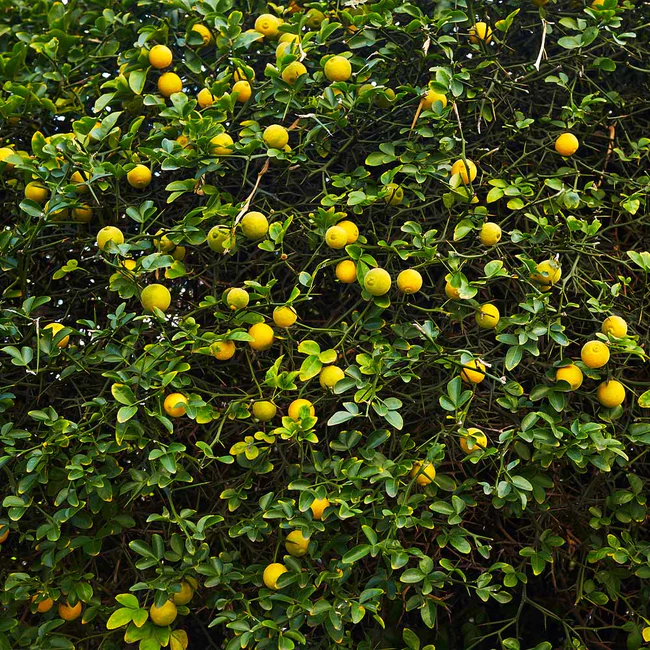
Trifoliate Orange (Citrus trifoliata or Poncirus trifoliata) is a deciduous plant and is hardy to temperatures as low as -10°F or -20°C when grown outdoors.
This makes it a great option for gardeners in areas with cold winters, as it can withstand harsh winter conditions.
Despite its hardiness, it is still important to protect the plant from frost damage by providing winter protection, such as covering with frost cloth or burlap or placing it in a protected area such as a greenhouse or cold frame.
Winter protection:
When growing Trifoliate Orange outdoors in severe winter weather areas, it is important to protect the plant from the cold during the winter months.
This can be achieved by covering the plant with frost cloth or burlap, or by placing it in a protected area such as a greenhouse or cold frame.
In most areas where temperatures regularly drop below freezing, it may not be necessary to bring the plant indoors to protect it from damage.
Protecting from frost damage:
Frost damage can be a major concern when growing Trifoliate Orange, especially in areas where temperatures regularly drop below zero.
To prevent frost damage, it is important to place the plant in a protected area, such as a greenhouse or cold frame, or to cover it with frost cloth or burlap.
Preventing Root Rot And Other Diseases:
Root rot and other diseases can be a problem when growing Trifoliate Orange, especially if the soil is poorly drained or if the plant is overwatered.
To prevent these problems, it is important to plant the Trifoliate Orange in well-drained soil and to avoid over-watering.
Additionally, it is important to be vigilant for signs of disease and to take action to treat the problem promptly if it is detected.
Some common diseases that can affect Trifoliate Orange include citrus canker, citrus scab, and Phytophthora root rot.
If a disease is detected, it is important to follow the recommended treatment protocol to prevent the spread of the disease and to protect the health of the plant.
Indoor Care For Flying Dragon In Containers
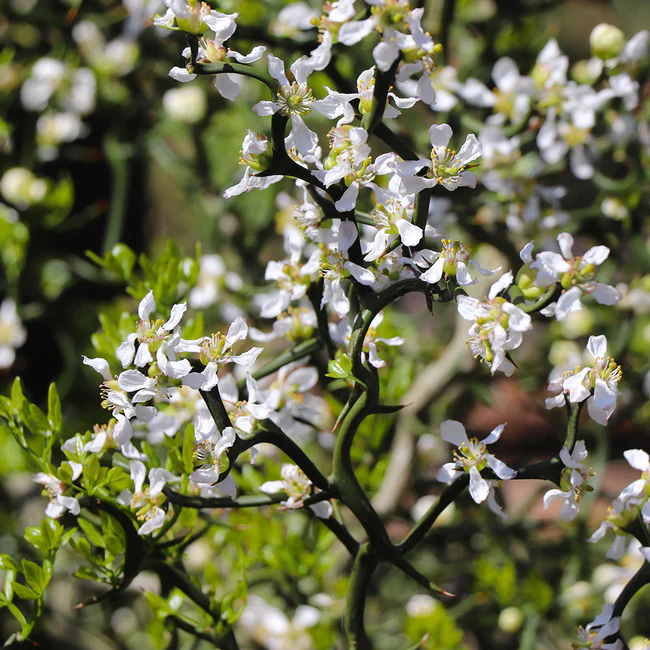
When growing Trifoliate Orange (also known as Flying Dragon) in containers indoors, it is important to provide proper care to ensure healthy growth and to avoid issues such as root rot.
Here are some tips for indoor care of Trifoliate Orange in containers:
• Light: Trifoliate Orange prefers bright, direct sunlight. Place the plant near a sunny window, but you can use an LED light as a supplement if you don’t have a sunny spot.
• Watering: Trifoliate Orange is drought-tolerant, but it is important to not let the soil dry out completely.
Water the plant when the top inch of soil is dry. Make sure to drain any excess water from the pot to avoid root rot.
• Soil: Use a well-draining soil mix, such as a commercial potting mix with extra perlite added for improved drainage.
You can also buy commercial citrus potting soil. A coco coir and perlite mix works very well using 25-50% perlite.
• Fertilization: Trifoliate Orange does not require frequent fertilization, but it can benefit from a balanced, water-soluble fertilizer applied every 4-6 weeks during the growing season.
The easiest way to fertilize is by using slow-release citrus tree spikes.
The use of tree spikes will take the guesswork out of fertilizing. Here is what I recommend for  fertilizing your Flying Dragon.
fertilizing your Flying Dragon.
I recommend using Jobes Organics fertilizer spikes.
They are easy to use and last for 2-3 months.
They are designed for container-grown citrus.
Using 2 spikes for a 12-inch pot or 3 for an 18-inch pot takes the guesswork out of fertilizing.
• Humidity: Trifoliate Orange is relatively tolerant of low humidity, but it can benefit from increased humidity during the winter months when indoor air tends to be dry. You can increase humidity around the plant by placing a tray of water near it, misting it regularly, or using a humidifier.
By following these guidelines, you can provide the best care for your Trifoliate Orange and keep it healthy and happy in a container indoors.
Trifoliate Orange FAQs
The Trifoliate Orange, with its unique three-lobed leaves and ornamental appeal, is a fascinating addition to many gardens.
However, like any other plant, it has its own set of care requirements to thrive and flourish. Common inquiries often revolve around its watering, sunlight, soil preferences, and pruning needs.
As you delve into the care regimen of Trifoliate Orange, having a clear understanding of these factors can significantly enhance your success in nurturing this unusual plant.
Here, we address some of the common questions to guide you through the process of caring for your Trifoliate Orange.
Q. How hardy is Trifoliate Orange?
A. The Trifoliate Orange (Poncirus trifoliata) is known for its hardiness and is capable of withstanding cold temperatures that many other citrus plants cannot tolerate.
It’s often rated as hardy in USDA hardiness zones 5 through 9. This means it can withstand minimum temperatures ranging from -20 to 30°F (-29 to -1°C), depending on the specific zone.
Its cold tolerance makes it a valuable rootstock for other less hardy citrus varieties, helping them to withstand cooler temperatures.
Besides its cold hardiness, Trifoliate Orange is also resilient to many pests and diseases that typically affect other citrus plants, making it a relatively low-maintenance choice for those looking to add a unique and hardy plant to their garden.
Q. What type of soil is best for Trifoliate Orange?
A. Trifoliate Orange prefers well-draining soil to prevent waterlogging, which can lead to root rot.
Q. How much sunlight does a Trifoliate Orange require?
A. Full sun is ideal for Trifoliate Orange, ensuring it receives at least 6-8 hours of sunlight daily for healthy growth.
Q. What is the watering regimen for a Trifoliate Orange?
A. Regular but moderate watering is key, allowing the soil to dry out between watering sessions to prevent over-watering.
Q. When and how should I prune my Trifoliate Orange?
A. Pruning can be done in late winter or early spring to maintain shape and remove any dead, diseased, or crossing branches to encourage healthy growth.
Trifoliate Orange Care Final Thoughts
In conclusion, Trifoliate Orange (Citrus trifoliata or Poncirus trifoliata), also known as Flying Dragon, is a versatile and hardy plant that can be used as a hedge, a dwarfing rootstock for citrus trees, or as a container plant indoors. In this blog post, we covered the following key points:
Overview of Trifoliate Orange and its characteristics, origin, and history
Growing Trifoliate Orange, including climate and soil requirements, propagation methods, fertilization, and watering
Using Trifoliate Orange as a dwarfing rootstock for citrus trees, including advantages and grafting techniques
Care for Trifoliate Orange, including winter protection, frost protection, and preventing root rot and other diseases
Indoor care for Trifoliate Orange in containers, including light requirements, watering, soil, fertilization, and humidity
In conclusion, Trifoliate Orange is a valuable plant in the citrus industry and provides many benefits as a hedge and a dwarfing rootstock for citrus trees.
With proper care and attention, it can also make a beautiful and unique container plant indoors.
Whether you’re a seasoned gardener or just starting out, Trifoliate Orange is an excellent choice for your garden or home.
Read more at:
Growing Indoor Citrus Trees
How To Grow Buddha’s Hand Indoors

